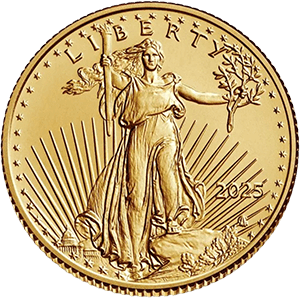A Small Town With Global Impact
Nestled in the mountains of Wyoming, Jackson Hole is best known for its breathtaking scenery and world-class skiing. But every August, it transforms into the epicenter of global finance as central bankers, finance ministers, and leading economists gather for the Jackson Hole Economic Symposium.
For decades, this annual meeting has shaped the trajectory of global monetary policy. From signaling new rounds of quantitative easing to telegraphing interest-rate hikes, speeches delivered here have a history of sending ripples across markets. For gold investors, the event is often a pivot point: dovish signals can ignite rallies, while hawkish tones can create short-term pressure.
Global Power Players
The Jackson Hole Symposium is hosted by the Federal Reserve Bank of Kansas City, but it draws attendees from around the world. Key players include:
-
Federal Reserve Chair Jerome Powell – whose keynote remarks are the main event.
-
Central bankers from Europe, Asia, and emerging markets – including the European Central Bank, Bank of Japan, and the People’s Bank of China.
-
Top economists and finance ministers – whose papers and panels influence the broader discussion.
Why does this matter? Because it’s one of the few times each year when global policymakers openly debate economic challenges without the filter of formal policy meetings.
Themes That Move Markets
Each year’s symposium has a theme. In the past, these have included:
-
2010 (Ben Bernanke): Laid groundwork for QE2, sparking a gold rally.
-
2019 (Jay Powell): Trade war commentary that rattled equity markets and boosted safe havens.
-
2020 (Virtual Symposium): The Fed unveiled its shift toward “average inflation targeting,” which changed the way markets viewed long-term rates.
This year, markets are focused on the Fed’s policy path for 2025 and beyond. Inflation has cooled from its highs, but growth is faltering, and unemployment is ticking upward. Will Powell use Jackson Hole to prepare investors for rate cuts — or to warn of patience?
Interest Rates and Gold’s Tight Link
Gold has no yield. That’s why its price often moves inversely to U.S. interest rates. When rates rise, bonds and cash become more attractive relative to gold. When rates fall, gold shines as a store of value and inflation hedge.
If Powell signals cuts are coming:
-
U.S. yields could drop further.
-
The dollar could weaken.
-
Gold could attract both institutional flows and retail demand.
If Powell signals higher-for-longer:
-
Yields may rise.
-
Dollar strength could weigh on metals.
-
Gold may consolidate before resuming its long-term uptrend.
Market Mechanics at Play
-
Bond Yields: A dovish speech can send Treasury yields lower, instantly boosting gold.
-
Dollar Index (DXY): A weaker dollar makes gold cheaper for foreign buyers, lifting demand.
-
ETF Flows: Gold ETFs like GLD often see inflows following dovish Fed guidance.
-
Central Bank Buying: Nations like China and India have been steady gold buyers — Fed policy shifts only reinforce that trend.
Historical Lessons for Gold Investors
-
2010: Bernanke’s Jackson Hole remarks set expectations for QE2 → gold surged 30% over the next year.
-
2019: Powell’s speech amid the trade war lifted gold above $1,500/oz for the first time in years.
-
2020: The Fed’s inflation targeting pivot accelerated gold’s run to a record $2,070/oz.
History shows that Jackson Hole often acts as a launchpad for major gold moves.
Investor Takeaway
The Jackson Hole Symposium isn’t just academic theater — it’s a policy megaphone. For gold investors, it’s a signal worth watching closely.
-
If dovish: Look for gold to gain momentum as lower yields and a weaker dollar take hold.
-
If hawkish: Expect short-term pressure, but remember: dips often prove to be buying opportunities when structural demand from central banks and ETFs remains strong.
Gold’s next big move could start in Wyoming. Smart investors should be prepared to act when the Fed speaks.








